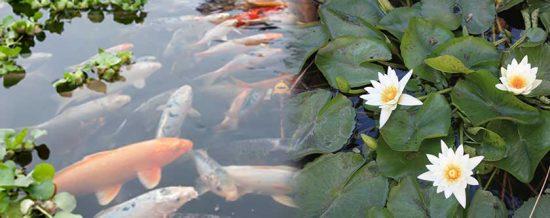Aquatic Weeds – how to control them and what equipment is needed
Common Aquatic Weeds
Aquatic weeds are a very common issue among pond, lake or river users. There are however different types of weeds.
- Submerged Weeds – grow mainly underwater with only flowering shoots above the surface. They do not provide any oxygen however they do give good cover to aquatic animals
- Australian Swam Stone Crop
- Canadian Pondweed
- Curly Leaf Pondweed
- Water Milfoil
- Emergent Weeds – typically grow in clumps on the bank or shallow water. Tall, narrow leaves that increase in numbers due to spreading rhizomes
- Reed sweet grass
- Common reed
- Bulrushes
- Reedmace
- Water Primrose
- Yellow Flag Iris
- Floating Plants – form dense carpets across the whole of the surface of water. Can be misleading to children and livestock who mistake them as solid ground
- Duckweed
- Water fern
- Yellow Waterlily
- White Waterlily
- Broad leaved pondweed
Controlling Aquatic Weeds
Only certain weed killers containing glyphosate such as Roundup ProAcitve, Roundup ProVantage and Gallup Biograde Amenity can be legally used on aquatic weeds and are only effective if they have weed leaves above the water. Adding the natural ‘sticky’ adjuvant, Topfilm to those weed killers, is essential to improve the control of tall, emergent weeds and floating weed species where herbicide wash-off is a problem.
Incorrect application of pesticides to an aquatic area can have serious implications for water quality and the species that inhabit that environment, so it is important that you have the appropriate training. When using a knapsack or handheld sprayer, the ‘aquatic area’ begins at one metre from the top of the river bank.
To apply pesticides, in or near water, take a look at our PA6A(AW) training course and if you need to operate boat mounted pesticide sprayers on water, head on over to our PA5 training course to find out more.
*To find out more information on weed killer control of aquatic weeds, visit our Aquatic Weed Control problem page*
As using a glyphosate is only effective on weeds with leaves above surface, cultural methods can be used to help deal with more difficult situations.
- Submerged Weeds
- In smaller ponds, the weeds can be thinned by frequent raking
- In larger ponds or lakes a long handled or drag scythe can be used to cut the weeds by hand
- If you are using cutting as a control method you should be aware that this may require two or more treatments per year
- Avoid cutting Australian Swamp Stone Crop as this will regrow from any of the stem fragments left behind
- Emergent Weeds
- Hand pulling the weeds in smaller ponds can be effective as long as you have pulled out the root with the rest of the plant.
- If you are trying to control the weeds around larger areas, livestock can be used to manage any growth of rushes or reeds on banksides
- Floating Weeds
- Can be removed with a rake
- Use fountains or other forms of creating running water to disturb the water surface which in turn reduces infestations
- The presence of water lilies can reduce the amount of duckweed as they do not compete well
Equipment we suggest for aquatic weed control
When using a glyphosate weed killer we would advise that this is either applied using a sprayer or a weed wiper depending on your situation. It is always important to check the product label just to make sure the type of equipment that is approved for use.
- Handheld Sprayers – perfect for treating smaller areas that are relatively easy to get close to
- Knapsack Sprayers – if you have a larger area that needs treating or cannot easily reach the weeds this is perfect due to having the reach of the lance
- Telescopic Lances – ranging in length, up to 5.4m you can reach further without getting your toes wet!
- Weed Wiper – for use if you are wanting to treat weeds that are amongst plants that you do not want to risk getting a spray drift on. Allows you to apply the glyphosate directly to the weed itself





